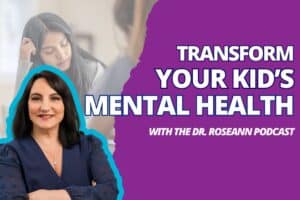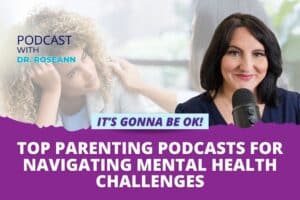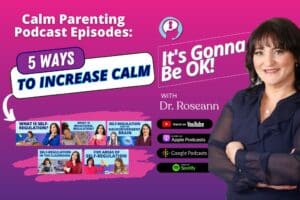AuDHD seems like a new concept, and many parents are asking about it. So, what is AuDHD? The clinical term AuDHD mixes two mental health conditions, autism and ADHD, which means a child with AuDHD is diagnosed with autism and ADHD.
These kids have an autistic brain and an ADHD brain, which affect their quality of life. To help them, it’s necessary to break down how this condition affects their daily life, learn how it came about, and the different ways to support them.
Overview of Autism Spectrum Disorder (ASD)
Autism Spectrum Disorder contributes a unique experience that blends with that of ADHD. For starters, autistic people often grapple with social challenges. They find interactions complex and sometimes perplexing due to difficulties in understanding nonverbal and social cues.
Additionally, the intense interests and repetitive behaviors characteristic of autistic individuals introduce a distinctive layer to AuDHD. It influences how autistic children engage with the world and navigate their surroundings. Sensory sensitivities and communication differences further shape the AuDHD experience, creating additional challenges that require thoughtful consideration and tailored support.
The interaction of autism with AuDHD highlights the importance of recognizing the diverse aspects of these neurodevelopmental disorders. The coexistence of struggles with the social norms, special interests, and sensory sensitivities of an autistic person, when combined with the energy and impulsivity of ADHD people, results in a complex but rich character of children with AuDHD.
Overview of Attention Deficit Hyperactivity Disorder (ADHD)
The ADHD brain is constantly on the move and is filled with a bustling mix of thoughts and emotions. For kids with ADHD, honing in on one thing for an extended period can be a bit challenging because their minds are always in motion and brim with energy and excitement.
There are three main types of ADHD: Predominantly Inattentive, Predominantly Hyperactive-Impulsive, and a combination of both. While there are challenges around ADHD, the good thing about is with the right support, these kids can channel their energy and find fantastic ways to put it to good use. ADHD transforms the mind into a buzzing center of activity, bringing not just challenges but also a unique enthusiasm for life.
Learning about the complexities of different ADHD types empowers parents to unleash the unique potential within a child and transform his or her hyperactive mind into a tool for creativity and achievement.
The Concept of AuDHD
A child with AuDHD goes through the characteristics of autism, with its unique social challenges, intense interests, and repetitive behaviors, harmonizing with the energetic and sometimes impulsive traits associated with ADHD (Kyriazis et al., 2023).
The dual diagnosis of ADHD and autism proposes a blend of strengths and challenges that go beyond the scope of each condition alone. This combination requires a delicate approach to reach an accurate diagnosis, support, and intervention, one that recognizes the diverse and dynamic nature of both neurodevelopmental conditions and strives to enhance the well-being of the child.
Exploring the overlapping features and distinct characteristics within AuDHD provides us with a deeper understanding of the intricate blend of traits individuals with this dual diagnosis exhibit. In relation to ADHD and autism, the most common AuDHD symptoms include:
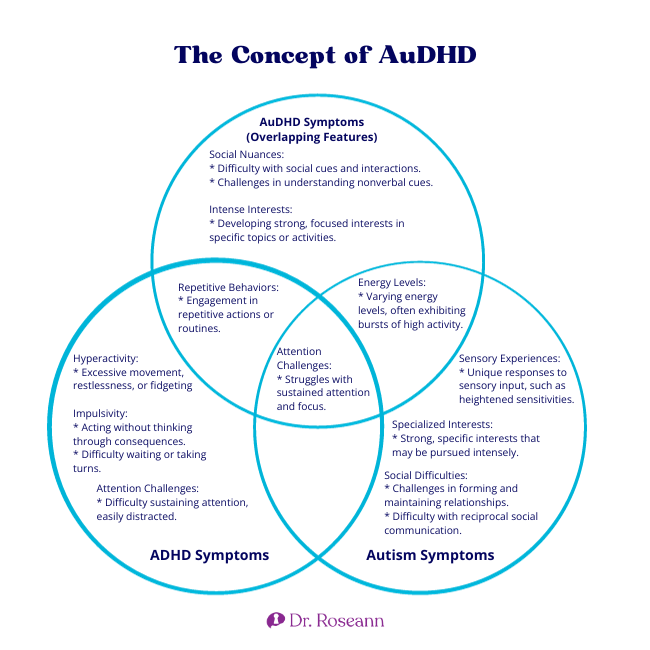
Why Am I Just Hearing About AuDHD Now?
You might be wondering why the term AuDHD, which describes the coexistence of Autism Spectrum Disorder (ASD) and Attention Deficit Hyperactivity Disorder (ADHD) in a child, seems like a new term to you. This isn’t because it’s a brand-new discovery but rather due to a shift in how we understand and recognize these conditions together.
Here's why AuDHD is becoming more prominent in conversations among parents, educators, and healthcare providers:
- Changing Diagnostic Guidelines: For years, medical guidelines made it tricky to diagnose a child with both ASD and ADHD. Often, professionals focused on one primary diagnosis, potentially overlooking symptoms of the other condition. This historical approach meant that some children didn't receive the full support they needed.
- Better Awareness Among Professionals: There’s a growing realization that neurodevelopmental conditions are not black and white. Kids can show a mix of characteristics that span across different disorders, including ASD and ADHD. This broader understanding helps in identifying and supporting all the needs of a child.
- Research Breakthroughs: Recent studies are shining a light on the overlap between ASD and ADHD, from shared genetic markers to similarities in brain structure. This research backs up what many parents have seen in their own children, making the case for recognizing and addressing both conditions together.
- Voices from the Community: The push from individuals and families affected by these conditions has brought their realities into the spotlight. Personal stories and advocacy work have emphasized the diverse experiences of those with AuDHD, encouraging a more inclusive approach to diagnosis and support.
- A Move Towards Customized Support: There's a shift towards understanding that every child is unique. Recognizing a child has both ASD and ADHD means they can get support that's tailored to their specific challenges and strengths, ensuring they have the best opportunity to thrive.
- The Power of Sharing: Thanks to social media and online forums, parents are more connected than ever. Sharing experiences and information online has played a huge role in raising awareness about AuDHD, providing a space for support and understanding that wasn't as accessible before.
Understanding AuDHD marks a significant step towards embracing the complexity of neurodevelopmental disorders. As awareness grows, so does the community of support for our children, ensuring they receive the nuanced care and understanding they deserve.
Challenges of AuDHD
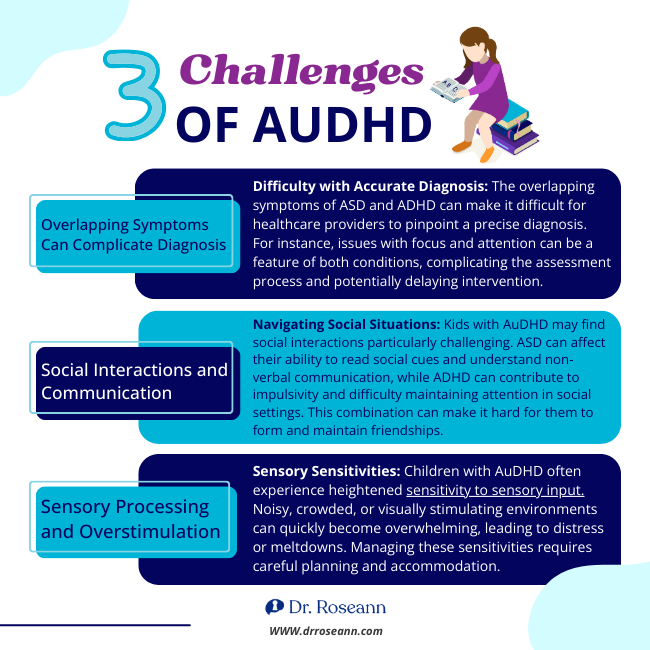
Navigating life with AuDHD, the co-occurrence of Autism Spectrum Disorder (ASD) and Attention Deficit Hyperactivity Disorder (ADHD), presents unique challenges for children and their families. For the children, teens and adults I work with, they feel comforted by what AuDHD encapsulates because it helps them to better understand their brain.
Understanding these challenges is the first step toward finding effective ways to support and empower these kids. Here are some of the key difficulties families might face:
Overlapping Symptoms Can Complicate Diagnosis
- Difficulty with Accurate Diagnosis: The overlapping symptoms of ASD and ADHD can make it difficult for healthcare providers to pinpoint a precise diagnosis. For instance, issues with focus and attention can be a feature of both conditions, complicating the assessment process and potentially delaying intervention.
Social Interactions and Communication
- Navigating Social Situations: Kids with AuDHD may find social interactions particularly challenging. ASD can affect their ability to read social cues and understand non-verbal communication, while ADHD can contribute to impulsivity and difficulty maintaining attention in social settings. This combination can make it hard for them to form and maintain friendships.
Sensory Processing and Overstimulation
Sensory Sensitivities: Children with AuDHD often experience heightened sensitivity to sensory input. Noisy, crowded, or visually stimulating environments can quickly become overwhelming, leading to distress or meltdowns. Managing these sensitivities requires careful planning and accommodation.
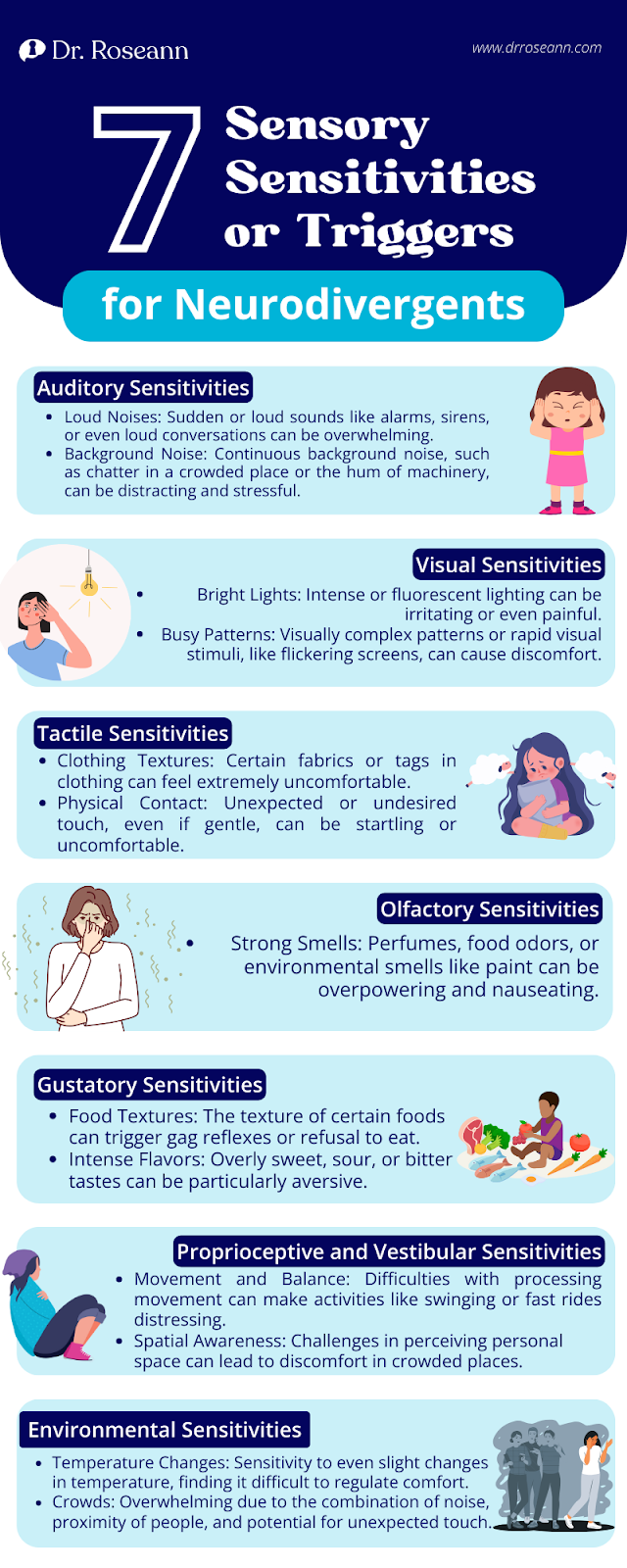
Managing Focus and Hyperactivity
- Balancing Focus and Energy: The impulsivity and hyperactivity associated with ADHD can clash with the intense focus on specific interests that is often seen in kids with ASD. Finding activities that accommodate both the need for movement and deep focus can be challenging but is crucial for their engagement and learning.
Educational Needs
- Educational Support: Tailoring educational approaches to meet the dual needs of children with AuDHD is essential. They may require support that addresses both the need for structure and predictability, often helpful for ASD, and strategies to manage impulsivity and maintain focus, as seen with ADHD.
Emotional Regulation
- Emotional Sensitivity and Regulation: Kids with AuDHD may have a heightened emotional sensitivity and may struggle with emotional regulation more so than children with ASD or ADHD alone. This can lead to intense reactions to seemingly minor triggers, requiring strategies that help them manage their emotional responses.
Executive Functioning Challenges
- Organizational Skills: Executive functioning challenges, such as difficulties with planning, organizing, and prioritizing, can be pronounced. These challenges can affect every aspect of daily life, from schoolwork to maintaining a routine.
Finding the Right Support and Interventions
- Accessing Suitable Interventions: Finding interventions that address the complex needs of children with AuDHD can be difficult. It’s important to seek out professionals experienced in both ASD and ADHD to develop an integrated approach to therapy and support.
Family Dynamics
- Impact on Family Life: The demands of supporting a child with AuDHD can affect the whole family. Parents and siblings may face stress from managing care, advocating for educational accommodations, and navigating social misunderstandings.
Understanding these challenges is a critical part of advocating for children with AuDHD. With the right support, strategies, and accommodations, it's possible to help these kids navigate their difficulties and leverage their unique strengths, paving the way for their success and well-being.
How Common is AuDHD?
According to the Centers for Disease Control and Prevention (CDC) in the United States, the prevalence of autism is estimated to be around 1 in 54 children as of 2020. Now, according to Autism Speaks, 1 in 36 children in the U.S. have autism.

ADHD is also common, with global prevalence estimated at around 5-7% in children and adolescents.
It's important to note that the occurrence of both conditions together, also referred to as co-occurrence or comorbidity, is not uncommon. Studies suggesting that ADHD kids and autistic people can experience a range of neurodevelopmental challenges apart from their distinct conditions are wide. However, since the term AuDHD is relatively new, it may not be widely used in clinical or research contexts at this time.
Diagnosis and Assessment
The diagnosis and assessment of AuDHD involve a thoughtful and comprehensive approach to understanding the unique characteristics and challenges presented by children and teens with this dual neurodevelopmental condition.
Mental health professionals use established criteria for ADHD and autism, often referencing the “Diagnostic and Statistical Manual of Mental Disorders” (DSM). It is the guidebook that helps determine if individuals meet the criteria of a certain mental health disorder.
To diagnose AuDHD, mental health professionals carefully observe and evaluate a range of factors. They consider both the diagnostic criteria for Autism Spectrum Disorder and Attention Deficit Hyperactivity Disorder.
The goal is to recognize the coexistence of these conditions and understand how they manifest in an individual's behavior, cognition, and social interactions. The assessment process goes beyond a checklist and aims to capture the individuality of each person with AuDHD. It involves interviews with the individual, parents, and teachers, as well as behavioral observations.
Additionally, some assessments may explore cognitive functions, executive functioning, and other relevant aspects to create a comprehensive profile. The goal is not only to diagnose AuDHD accurately but also to gain insights into the person's strengths, preferences, and areas where support is needed.
Diagnosing adhd and autism first using this thorough assessment guideline lays the foundation for tailored interventions and support strategies to address the individual needs of children and teens with AuDHD.
Treatment and Interventions
Appropriate treatment and interventions for AuDHD are multifaceted and tailored to address the unique challenges and characteristics associated with both conditions. Behavioral and educational interventions play a central role, with emphasis on the individualized strategies that leverage the strengths and interests inherent in Autism and ADHD.
Social skills training, behavioral therapy, time management, and executive dysfunction assessment aim to enhance social interactions, manage specific behaviors linked to ADHD, and develop skills crucial for daily functioning (Chacko et al., 2014).
The BrainBehaviorResetTM Program is a multidisciplinary approach involving collaboration among healthcare professionals, active parental involvement, and sensory-based interventions to further contribute to a holistic treatment plan. The program also includes neurofeedback, PEMF therapy, and magnesium supplements.
Parent Action Steps
☐ Learn about Autism and ADHD to grasp their distinct differences in relation to AuDHD
☐ Engage your child in social skills training and behavioral therapy programs
☐ Make adjustments at home to accommodate sensory overload
☐ Collaborate with educators to ensure tailored educational plans for your child
☐ Actively participate in regular progress assessments
☐ Use the Solution Matcher to Work 1:1 with Dr. Roseann
Citations
Chacko, A., Kofler, M., & Jarrett, M. (2014). Improving Outcomes for Youth with ADHD: A Conceptual Framework for Combined Neurocognitive and Skill-Based Treatment Approaches. Clinical Child and Family Psychology Review, 17(4), 368–384. https://doi.org/10.1007/s10567-014-0171-5
Kyriazis, M., Wells, L., & Mikellides, G. (2023). Autism and ADHD in old age. Qeios. https://doi.org/10.32388/8QQXWW
Are you looking for SOLUTIONS for your struggling child or teen?
Dr. Roseann and her team are all about science-backed solutions, so you are in the right place!
Grab your complimentary copy of
147 Therapist-Endorsed Self-Regulation Strategies for Children: A Practical Guide for Parents
You can get her books for parents and professionals, including: It’s Gonna Be OK™: Proven Ways to Improve Your Child’s Mental Health, Teletherapy Toolkit™ and Brain Under Attack: A Resource For Parents and Caregivers of Children With PANS, PANDAS, and Autoimmune Encephalopathy.
If you are a business or organization that needs proactive guidance to support employee mental health or an organization looking for a brand representative, check out Dr. Roseann’s professional speaking page to see how we can work together.
Dr. Roseann is a Children’s Mental Health Expert and Licensed Therapist who has been featured in/on hundreds of media outlets including The Mel Robbins Show, CBS, NBC, PIX11 NYC, Today, FORBES, CNN, The New York Times, The Washington Post, Business Insider, Women’s Day, Healthline, CNET, Parade Magazine and PARENTS. FORBES called her, “A thought leader in children’s mental health.”

She coined the terms, “Re-entry panic syndrome” and “eco-anxiety” and is a frequent contributor to media on mental health.
Dr. Roseann Capanna-Hodge has three decades of experience in working with children, teens and their families with attention-deficit hyperactivity disorder (ADHD), autism, concussion, dyslexia and learning disability, anxiety, Obsessive Compulsive Disorder (OCD), depression and mood disorder, Lyme Disease, and PANS/PANDAS using science-backed natural mental health solutions such as supplements, magnesium, nutrition, QEEG Brain maps, neurofeedback, PEMF, psychotherapy and other non-medication approaches.
She is the author of three bestselling books, It’s Gonna Be OK!: Proven Ways to Improve Your Child's Mental Health, The Teletherapy Toolkit, and Brain Under Attack. Dr. Roseann is known for offering a message of hope through science-endorsed methods that promote a calm brain.
Her trademarked BrainBehaviorResetⓇ Program and It’s Gonna be OK!Ⓡ Podcast has been a cornerstone for thousands of parents facing mental health, behavioral or neurodevelopmental challenges.
She is the founder and director of The Global Institute of Children’s Mental Health, Neurotastic™Brain Formulas and Dr. Roseann Capanna-Hodge, LLC. Dr. Roseann is a Board Certified Neurofeedback (BCN) Practitioner, a Board Member of the Northeast Region Biofeedback Society (NRBS), Certified Integrative Mental Health Professional (CIMHP) and an Amen Clinic Certified Brain Health Coach. She is also a member of The International Lyme Disease and Associated Disease Society (ILADS), The American Psychological Association (APA), Anxiety and Depression Association of America (ADAA) National Association of School Psychologists (NASP), International OCD Foundation (IOCDF).
© Roseann-Capanna-Hodge, LLC 2023




